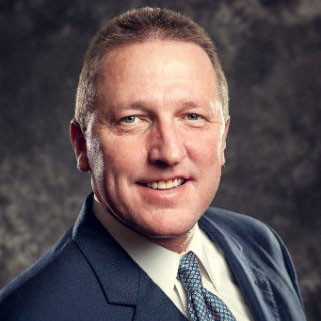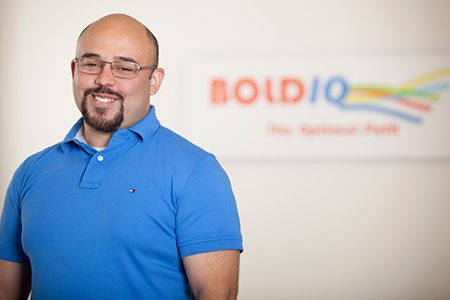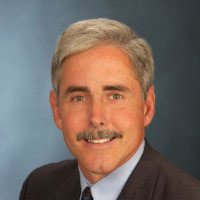September 13, 2016
In
Company News
Operators Optimize With BoldIQ’s Astro by Matt Thurber – September 12, 2016
BoldIQ’s Astro flight operations software originated as the power behind DayJet, which was slated to become an air-taxi operation eventually flying 1,000 Eclipse 500 very light jets. DayJet didn’t survive, for various reasons that might include delays in getting the Eclipse 500 into service, but Astro lives on as software that helps fleet operators manage their complex operations.
What makes Astro different from other operations software is its dynamic optimization capability, which does what no human can do: figure out how to get the most out of a fleet for the least cost, basing those calculations not only on existing conditions but also on anticipated demand and resource constraints.
“The whole concept was to run a complex and dynamic operation like a flight department or charter operation,” said BoldIQ president and CEO Roei Ganzarski. “Human brains are not built to be capable of looking at a lot of data and then making good decisions. You need sophisticated software.”
‘DYNAMIC OPTIMIZATION’
For busy operations, a typical situation might come about when trying to schedule another flight after allocating all the resources needed for previous trips. According to Ganzarski, humans become unable to manage all of the data involved once the number of elements being managed reaches seven, and decisions after that are compromised.
For example, say that a charter scheduling team has already made arrangements for seven flights, including blocking off the aircraft, making sure they are all capable of flying the requisite number of hours and cycles without exceeding any maintenance limits, ensuring that the flight crew meets all requirements, arranging ground transport, catering and so on. Then a new call comes from the sales department, a new trip request that is urgent and paid for and must be flown.
The harried humans in this scenario will have to scramble to find an aircraft and flight crew that aren’t already tied up with the earlier flights. And when they do manage to put the schedule together, it is likely that they did so inefficiently because they are incapable of looking at all of the data involved to juggle all of the planned trips in a way that makes the next trip efficient and profitable. Most operations will simply try to squeeze in the last request without even considering how it affects the company’s margins. The likely result will be yet another unprofitable deadhead leg.
As Ganzarski explained, “The goal of dynamic optimization is to look at the entire network and make a decision based on the future of the operation. Given all of the resources, pilots, aircraft, crew, demand, rules and the financial cost structure, what’s best? An hour from now, if we get more demand or a pilot calls in sick, what should we do right now? This answers what should we do with our resources and demand.”
In the example above, Astro’s Solver 2.0 engine would look at all of the planned flights on the upcoming schedule and make changes to accommodate the last request. The operator can create criteria within Astro for Solver to use. If the last flight cannot be accommodated without cutting into the required profit margin, for example, then the operator might choose to reject that request. The better outcome is if Solver can move around some elements of previous or upcoming trips to free up resources for that last request.
Astro’s Solver doesn’t calculate the cost of the flight, Ganzarski explained. “That’s usually what operators calculate. We say, the cost of the flight is irrelevant. What’s relevant is what will acceptance of this flight add to the network in terms of costs?”
Solver can instantly show how making small changes can affect the proposed flight. If a particular flight will cost the operator $3,000 to complete at a certain time, Solver can show how departing, say, two hours earlier will lower the network cost by $800 or departing two hours later will raise the cost by $2,000. If the customer is flexible and can leave earlier, the flight can still be completed and there is enough cost saving to offer a discount. But if the customer wants to leave later, then either he will have to pay more or the operator should refuse the trip. “Customers tell us this one [feature] alone allows them to say no to flights they normally would say yes to,” he said. “You can’t take unprofitable flights. You have the power of negotiation on the fly.”
Another way that Solver helps is with an AOG. For example: an aircraft is away on a trip and suffers a broken door seal that will take three days to repair, Ganzarski explains. Solver highlights four flights that are affected by the AOG. After blocking that airplane from flying for the repair period, the operator needs to figure out how to recover the four flights.
The operator can ask Astro for six different options to handle those four flights. The program can be run to cover a selected period, in this case the one that covers the four flights and the three days that aircraft will be grounded. The user can select various criteria, such as not allowing Astro to defer any maintenance, but that it isOK to add, say, a 15-minute delay to flights already scheduled. The user can also set Solver’s processing time; the more time, the better the results.
Solver creates six different plans to recover from the AOG. “Each one is feasible,” Ganzarski said. “One might be better financially, another operationally. You don’t have to focus on how to solve the problem; you just look at which solution you want to choose.”
Astro is designed for any size operation and a variety of operator types, from small flight departments to charter providers and fractional-share operations. Astro can also handle all details of the operation, from dispatch releases, crew records and maintenance scheduling to vendor integration, weight-and-balance, flight planning and pilot rest. Executive AirShare, PlaneSense and JetSuite are among the large operators using the system.
Click here to read full story









